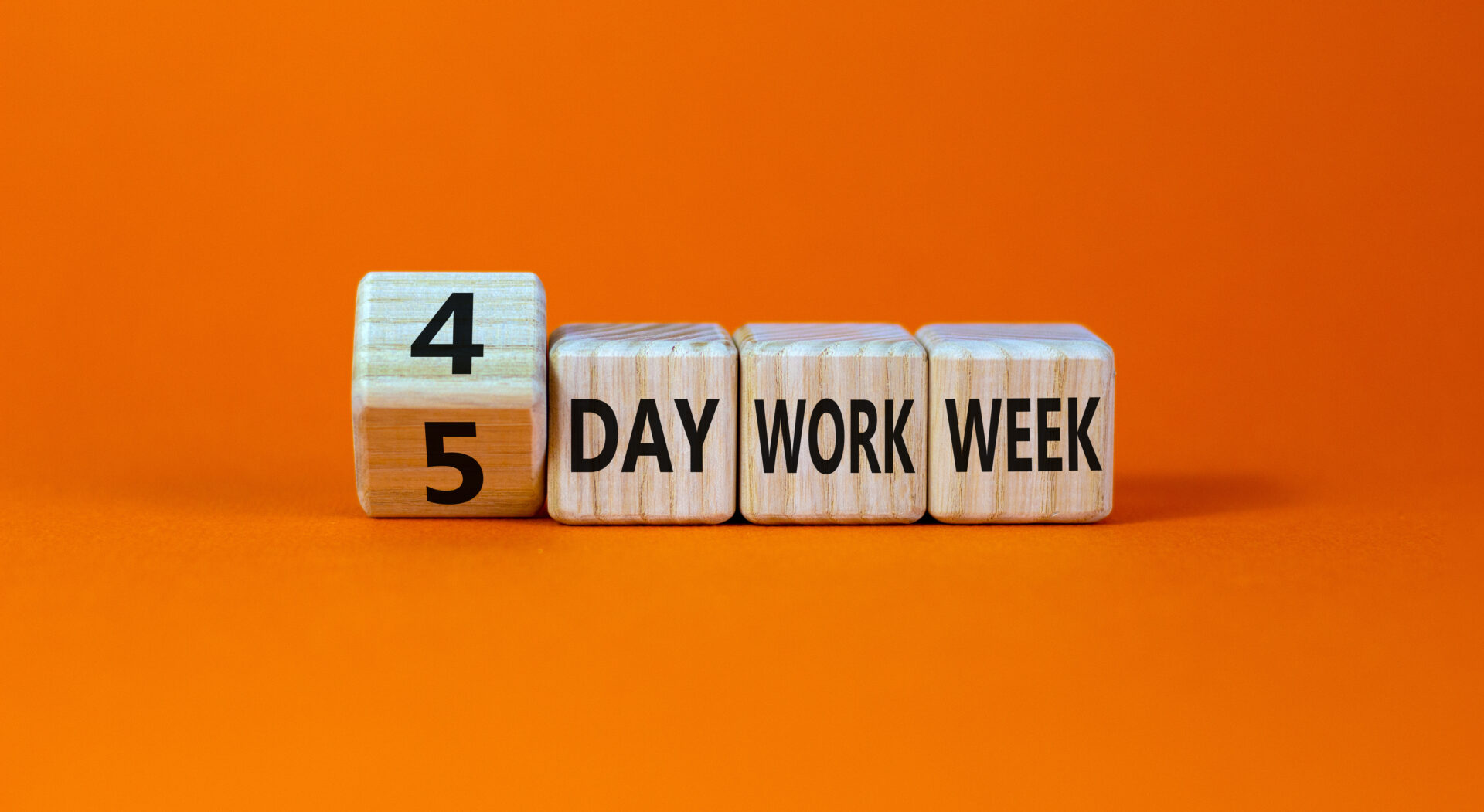More Life, Same Impact: Our 4 Day Week Journey


If you’d told me two years ago that we’d be operating a four-day working week at Tai Pawb—without cutting pay, compressing hours, or losing productivity—I’d have probably smiled politely and gone back to my to-do list. In fact I did. Then I had a brilliant chat with Michelle Reid, CEO of Merthyr Valley Homes, who patiently answered my thousand questions and gave me the nudge I needed to give it a go!
Here we are, over a year into our 4 Day Week journey, and I honestly can’t imagine going back (well, I can and do, at times, but bear with me).
So I wanted to share a bit more about how we got here, how it’s been going, what we’ve learned—and what’s next.
Why we did it
Let’s start with the “why.” Like a lot of people, I came across the growing research showing that a shorter working week could lead to the same or even better performance—and big wellbeing wins for staff. I read a Andrew Barnes’ book: The Four Day Week (he’s a guy that founded Perpetual Guardian, New Zealand-based trust and estate planning firm that ran one of the first large-scale 4 Day Week trials). 4 Day Week sounded great in theory, but we wanted to know if it would really work here—for our team, our members, and the unique pressures and rhythms of our work across housing and equality.
We decided to give it a go, on a trial basis, starting April 2024. The key principles were simple but firm: no one would lose pay, we wouldn’t compress hours (we work to outcomes, not clock-watching), and we’d co-design the approach together as a team. Most importantly, we agreed from the start that the trial would only become permanent if it worked for everyone—staff, members, stakeholders, and the wider organisation.
Getting ready
I’m not going to pretend we just flicked a switch and went from five days to four. The run-up to the pilot involved quite a bit of prep.
We looked at the global research and evaluation models (like this one). We ran pre-trial staff surveys to set a baseline on things like productivity, stress levels, and work-life balance amongst others. We spoke to other organisations doing it: like Waterwise (huge thanks are in order to Nicci Russel who was fantastically supportive and shared so much), Brook and CAB Gateshead.
We built a monitoring framework that would track everything from project delivery and member engagement to wellbeing and recruitment.
Most importantly, we involved the whole team from the very start. We held engagement sessions and made the 4 Day Week a regular agenda item in team meetings and one-to-ones. Everyone helped shape it. That co-design approach made a huge difference – it was important that this wasn’t something being “done to” the team; it was being built by us all.
Living our values
From the very beginning, we knew this wasn’t just about wellbeing or productivity. For us, the 4 Day Week was closely linked to our values and, in many ways, practicing what we preach.
The answer, it turned out, was quite a powerful one.
We saw parents and carers using the extra time to better balance their responsibilities. We heard stories of colleagues supporting loved ones through illness or mental health struggles – something they would have found very difficult with a five-day schedule. We saw colleagues rediscover hobbies, take care of their health, and re-engage with their communities.
So… what happened?
I could write multiple pages on the impact, but let me try and summarise.
First, the headline: it worked.
Our performance hasn’t just held up—it’s improved in many areas. Our training numbers, policy outputs, income generation and member engagement all saw positive growth. Website traffic grew, our events were better attended and well-rated, and satisfaction among members and stakeholders remained high.
Because of the mainly non-urgent nature of our work and small team size (there were 10 of us when we started) – we decided to trial having the same day off for everyone and monitor whether it worked and whether things fell through the cracks on those Fridays. The short answer is not really. There were a few contacts, none of them urgent. We didn’t miss any critical meetings. And we’ve stayed accessible – responding quickly on Mondays and managing expectations well.
Recruitment has been another big win. Roles that previously attracted a handful of applicants now bring in dozens – and people are telling us straight up that the 4 Day Week is a big part of why they want to work here.
The impact on wellbeing has also genuinely been one of the most rewarding aspects of the trial. Colleagues have told us they felt more present in their lives – able to spend meaningful time with family, engage in hobbies, or simply enjoy some breathing space (and wow do we need it!). Others have used the additional time to support loved ones through challenging periods, or finally get around to long-postponed personal goals like reading or creative pursuits.
We’ve seen improvements in mental health, reduced fatigue, better sleep, and more energy. Life satisfaction scores went up.
Let’s talk about the challenges
It’s worth acknowledging that 4 Day Week isn’t a one-size-fits-all solution – the more we read and the more organisations we spoke to (we did a webinar on our experience – members, if you are interested we can share the recording) – the more we realised that it can work very differently depending on the nature, size and remit of organisations.
Neither is it a “set it and forget it” situation – and we’ve definitely had to adapt, train and maintain our efficiency, productivity and new ways of working (and these are still evolving). Our session with Debbie Bailey, now new joint CEO of 4 Day Global, really helped us realise how important the ‘maintenance’ bit is.
One of the biggest shifts during our 4 Day Week pilot was how we approached productivity. We didn’t just hope to get more done in less time – we actively changed how we worked (well, this is an ongoing process as old habits really die hard!). Some of the things we did included cutting down meeting times, being more mindful of their purpose and prep needed, encouraging things like Diary Detox tools or blocking out focus time. Everyone has been encouraged to try out different tools like the Pomodoro technique, Eat 4 Frogs, or even just reflecting for a minute at the end of the day. I think it really made us acknowledge the time needed for deep focus, better planning, and… less faff.
We’re a small team, and inevitably, there will be times when we will need to work more (as is sometimes the case with 5 Day Week). We have been a bit short-staffed and have definitely needed to step up but on the acknowledgement that it’s temporary. Some of us have worked extra hours or picked up additional responsibilities – especially during peak periods. But this was always part of the deal: flexibility goes both ways, and the team understands that. That spirit of mutual trust and accountability has been crucial.
We also saw an increase in work intensity at certain times. People mentioned tighter deadlines and feeling busier, especially in the second half of the year. We’re taking that seriously and continuing to check in regularly. It’s something we’ll keep working on together.
In a recent chat with a stakeholder, they said something that really stuck with me: people tend to either rave about the 4 Day Week or dismiss it entirely. It’s either a miracle cure or a non-starter. But our experience – and the experience of many others – has been somewhere else entirely. Yes, we’re huge fans of the model. Yes, it’s transformed our organisation. But we’re not naive about it. We’re excited because we’ve seen it work, not because we think it’s effortless or always perfect – it’s totally understandable that it may take more effort and challenge in larger organisations and in different sectors.
Making it permanent
After a year of testing, listening, and learning, the decision was put to our board—and we’re delighted to say they approved the 4 Day Week as a permanent way of working at Tai Pawb.
We’re not treating it as a finished project, though. The world changes, workloads shift, and we know we’ll need to keep checking in and tweaking as we go. We’ve built in regular monitoring, light-touch six-month reviews, and annual deep dives. We’re also joining peer networks to keep learning from others and investing in ‘maintenance’ training to keep the benefits going long term.
It’s not just about time off – it’s about working smarter, looking after each other, and building a culture that supports inclusion, creativity, and sustainability.
A final thought
If you’re curious about trying something similar in your organisation, I’d say: talk to your team and talk to those that have tried or introduced it. Just like others who very kindly shared their experiences, approaches and documents with me, I have been sharing our frameworks with others.
And if you want to know what I’m doing most Fridays now (apart from a bit more DIY), I let myself rest, see friends for lunch, do ‘life admin’ and (at times) clean (I have no excuses now!).